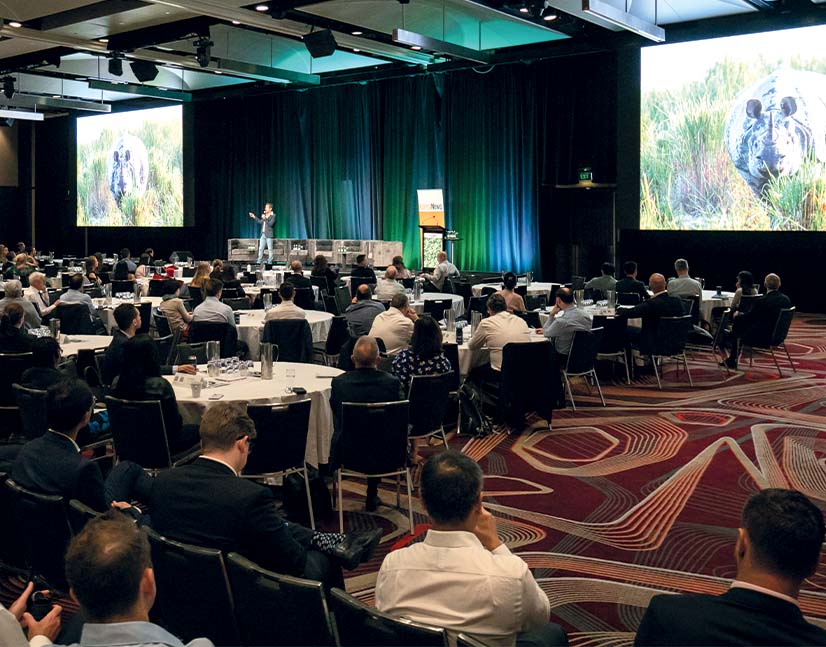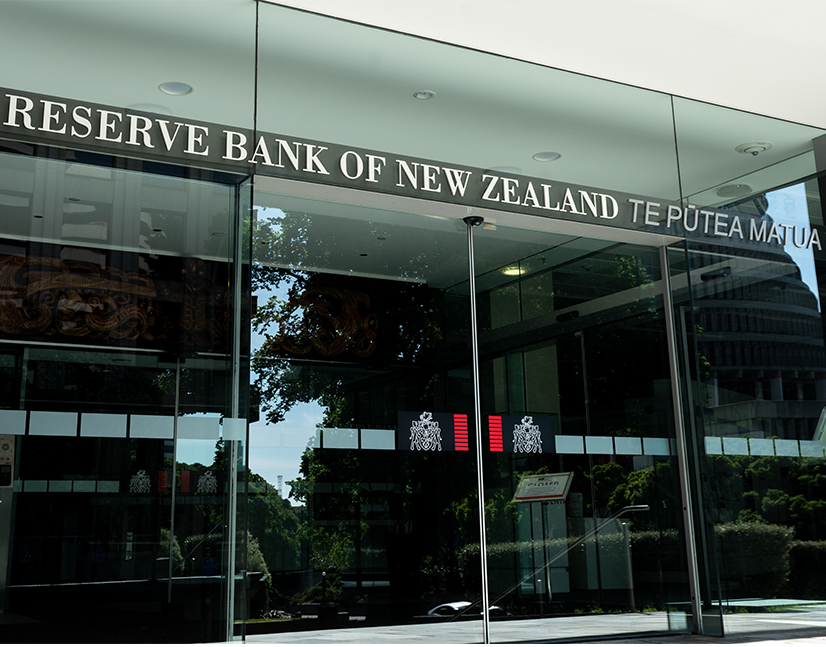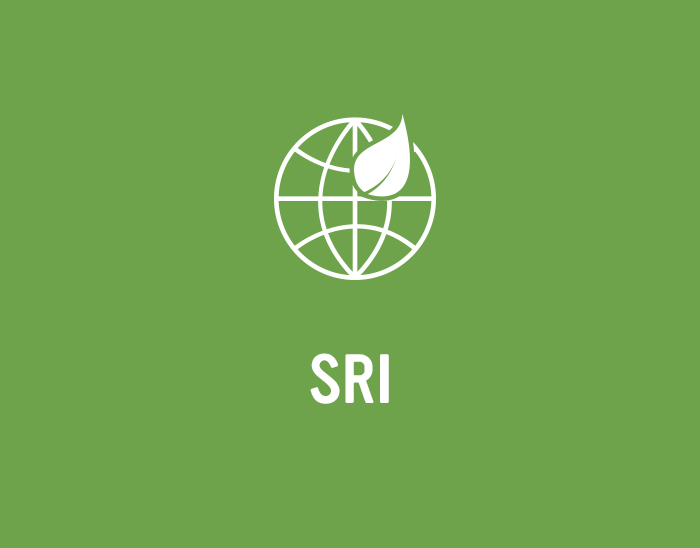
New Zealand moves forward with climate action
New Zealand’s resolve to address climate change accelerated in late 2021 as the Reserve Bank of New Zealand and the External Reporting Board detailed plans to introduce stress tests and standards underpinning mandatory climate-reporting legislation. The moves follow New Zealand’s pledge at COP26 to reduce emissions by 50 per cent of 2005 levels by 2030, an update from the previous 30 per cent commitment.
Chris Rich Staff Writer KANGANEWS
The Reserve Bank of New Zealand (RBNZ) plans to introduce a climate-change scenario-based industry stress test by 2023 as part of its focus on the risk climate change poses to financial stability. The central bank is also paying close attention to global moves to incentivise lending to environmental transition through the banking sector regulatory regime.
The RBNZ is building the stress test over the next 18 months, adding to its existing prudential supervisory task of stress-testing financial institutions for financial-stability purposes. It laid out its plans on 26 October, noting stress tests will be consistent with the External Reporting Board (XRB)’s mandatory climate-related disclosure regime.
The RBNZ announced the stress tests alongside its Climate Changed: 2021 and Beyond report, which outlines progress on the central bank’s 2018 climate-change strategy and lays out its roadmap for future action. XRB, an independent Crown entity responsible for accounting, auditing and assurance standards, also released a consultation, on 20 October. It details its intended climate-related disclosure framework and the local implementation of the governance and risk management aspects of the Task Force on Climate-related Financial Disclosures (TCFD)’s 2017 recommendations. The XRB is charged with designing the regime.
“[Climate change] poses the most significant risk that has ever confronted the financial system, both here and internationally,” says RBNZ governor, Adrian Orr. “It is a risk that has been slow moving. There is a real danger of not reacting in sufficient time.”
The RBNZ report states: “A key concern for us is the exposure of the financial sector, including banks and insurers, to climate-related risks. Anything that challenges the stability of the financial system and our economy is our core business.”
RBNZ STRESS TESTING
The report details initiatives the RBNZ is taking – covering emissions, policy functions, financial-system analysis, supervision and monetary policy – that set out its intention to address unknowns surrounding financial risks from climate change, particularly in relation to the central bank’s prudential responsibility of stress testing.
Also in 2021, the RBNZ incorporated climate change into its stress testing, with the inclusion of drought conditions in bank stress tests and severe weather events for insurance.
The central bank says the main challenges it has identified in conducting climate-change stress tests are data requirements, scenario design and industry engagement. It believes an incremental approach to stress testing will address these issues and place the regulator and industry in a better position to launch a full scenario-based climate-change industry stress test (see table 1).
TABLE 1. RBNZ STRESS-TEST SCHEDULE
| Step | Detail |
|---|---|
| 1 | Inclusion of specific risk types into the current round of stress tests. Exploration of the physical risks of drought in 2021 bank stress test, while 2021’s general-insurance stress test includes severe weather events. |
| 2 | The 2022 bank stress test will contain a risk assessment of particular exposures important for financial stability in New Zealand. Mortgage, commercial property and dairy exposures are under consideration, aimed at assessing the resilience of the most significant bank exposures to climate-change risk in New Zealand and identifying any gaps in data and modelling. |
| 3 | The review of climate-change stress testing literature, learning from other regulators and an analysis of the Network for Greening the Financial System scenarios. |
| 4 | Design of scenarios based on learning from the three earlier steps, working in consultation with industry. |
Source: Reserve Bank of New Zealand 26 October 2021
Other agencies are leading the design and implementation of New Zealand’s mandatory climate-risk disclosure regime, but the disclosure part falls mostly within the RBNZ’s remit as the prudential supervisor. The regime will not specifically be part of the RBNZ’s regulatory framework, however. The central bank planned to begin developing a guidance note on climate-change risk management for regulated entities later in 2021.
“The guidance will support climate-related disclosure plans and will cover governance, risk management, scenario analysis and disclosure,” the report adds. “The guidance will not impose new requirements in relation to climate risks; rather it will support compliance with the banks’ existing risk-management and governance requirements and will provide guidance to assist entities to manage climate risks.”
The RBNZ is in touch with the XRB to ensure consistency as the latter develops its standards and sector-specific guidance as part of its climate-disclosure regime.
Some sustainable-finance practitioners have proposed stimulating transition finance through the bank capital regime as an aggressive step prudential regulators could take to push the economy toward net-zero emissions. Regulators could adjust the risk-weighting of assets to encourage the provision of green finance and disincentivise lending to carbon-intensive industries.
While the RBNZ expects banks will recognise the inherently riskier nature of lending to carbon-intensive industries, Toby Fiennes, its Wellington-based head of financial system and policy analysis, says it is open to a capital regime that incentivises transition. “International standards are not there yet for having any higher risk weights for that sort of [carbon] concentration, but the Basel standard-setters are working on it and we will be a fast follower,” he reveals.
Fiennes notes the risk attached to loans is ultimately up to banks to work out, and the RBNZ is already encouraging the sector to attach higher capital to clients with high transition risk.
XRB’S FRAMEWORK
Development of the New Zealand standards follows the government’s 2020 announcement that it will introduce a mandatory reporting regime for key companies, making it the first country to begin legislating a climate-related financial-disclosure regime.
The Financial Sector (Climate-related Disclosures and Other Matters) Amendment Bill is making its way through parliament after its introduction in April 2021. Around 200 organisations will have to make disclosures, including listed companies with market capitalisation of more than NZ$60 million (US$43 million), the largest registered banks, licenced insurers and managers of investment schemes with more than NZ$1 billion in assets.
Regardless of legislation, sentiment is pushing businesses beyond those covered by the legal mandate to adopt climate-reporting standards. Smaller entities that do not meet the criteria for compulsory reporting are also following, according to David Clark, New Zealand’s minister of commerce and consumer affairs.
“Investors, whether in private equity or through other vehicles, are going to demand information is presented in an understandable, clear and comparable way,” he says. “To that end, I expect the standards we set for reporting entities will be more widely adopted.”
However, the XRB has elected to stagger consultation on the regime and to consider provisions for adoption in some areas of greater complexity. “We decided to start with the governance and risk-management sections because these represent an important starting point for all entities on their climate journey, their thinking and their reporting,” says April McKenzie, XRB’s Auckland-based chief executive.
The XRB intends its climate-related disclosure framework to comprise at least two standards – Aotearoa New Zealand climate standard one: climate-related disclosures (NZ CS 1) and Aotearoa New Zealand climate standard two: adoption of climate-related disclosures (NZ CS 2) – and one authoritative notice containing climate-related disclosure concepts.
NZ CS 1 is based on the recommendations of the TCFD. Two of its four thematic areas – governance and risk management – were the subject of a consultation held in November. The two remaining thematic areas – strategy, and metrics and targets – will be open for consultation in March 2022. A total of 11 disclosures are recommended under the themes the XRB intends to follow.
An annex to the consultation maps the TCFD recommendations for governance and risk management to the proposed disclosure requirements in NZ CS 1.
Recognising that the depth of understanding of climate-related issues varies across climate-reporting entities, and that capability to enable high-quality disclosures takes time to develop, the XRB is developing NZ CS 2 in a measured way it hopes will enable the most meaningful reporting journey.
“Adoption standards offer various provisions to entities when new requirements are to be applied for the first time and can include practical expedients, phased adoption or relief from providing comparative information,” the XRB says.
However, the XRB believes adoption provisions are not required for the governance and risk management sections of NZ CS 1. McKenzie explains: “Our current thinking on adoption for governance and risk management is that there is not likely to be any relief because these are not going to be onerous disclosures. They are about what [reporting entities] are doing now so should therefore be relatively straightforward.”
The XRB will release a formal exposure draft with a three-month consultation period in July 2022. Once passed, disclosures will be required for financial years beginning in 2022.
INTERNATIONAL COMPATIBILITY
The XRB is conscious the TCFD recommendations are now four years old and there have been many subsequent developments toward a globally relevant climate-related disclosure standard that can be applied across jurisdictions to enable international comparability. The XRB has therefore considered several additional TCFD resources and other jurisdiction-level disclosure standards.
The critical area of uncertainty is the creation of the International Sustainability Standards Board (ISSB) – which was launched at COP26 – and an exposure draft of its impending climate standard, which will be published in Q1 2022. Specifically, the consideration is the extent to which this standard will be globally adopted.
“This poses a challenge as we attempt to develop a climate-related disclosure framework for New Zealand in parallel,” the XRB consultation document says. “We are staying connected to these developments, both at an international level and at a jurisdictional level, to ensure a degree of compatibility as appropriate.”
McKenzie elaborates that XRB has started discussions with ISSB on its exposure draft and is following developments closely. She adds: “We believe, though, that there will be only so far the international standard will be able to develop disclosures… Some [disclosures] will need to be unique to New Zealand to reflect our situation.”
McKenzie says New Zealand’s regime is fully aligned with the TCFD recommendations. “But there have been some challenges because the TCFD framework was designed to be voluntary,” she notes. “In New Zealand, it is a mandatory framework and we are acutely aware of the consequences to directors and entities when it becomes a mandatory regime.”
McKenzie says the XRB is working through the 11 recommended disclosures under each of the TCFD’s themes to determine which will be considered “a must disclose” for New Zealand’s implementation. The conclusion will be accompanied by sector-specific guidance.
The consultation reveals several issues flagged by stakeholders over the past year are yet to be resolved, such as prescribing assumptions for scenario analysis, disclosure of greenhouse-gas emissions and their assurance, presentation requirements and a definition of materiality.
GOVERNANCE AND RISK MANAGEMENT
The intent of the governance section is to provide primary users with an understanding of board and management’s role in overseeing, assessing and managing climate-related issues.
Considering the Global Reporting Initiative standards, which include general governance disclosures at a broader level than TCFD, and New Zealand entities’ requirements under the NZX corporate governance code, the XRB has aligned its requirements under the governance section closely with TCFD recommendations and guidance.
It has not, however, yielded to demands for disclosure of specific climate-related skills and competencies of individual board members.
The XRB notes investors called for more information about board skills and competencies in relation to providing oversight of climate-related issues in the TCFD’s 2020 status report and that disclosure is included in other international standards.
“The risk with adding a disclosure on specific board skills and competencies is the inadvertent creation of an expectation that all boards should have specific climate expertise resulting in a ‘shopping list’ for directors’ expertise,” the XRB says. “This approach may not result in the right governance mix overall for a specific entity.”
The XRB believes it is useful to disclose how a board accesses expertise on climate-related issues, especially if the entity is in a complex industry.
The intention of the risk-management section is to provide primary users with an understanding of the quality of the processes an entity uses for identifying, assessing and managing climate-related risks, and how these are integrated into overall risk-management processes.
TABLE 2. XRB ADDITIONAL ITEMS FOR RISK DISCLOSURES
| Item | Detail |
|---|---|
| Tools and methods used | For example, an entity may be using scenario analysis, hazard maps or horizon scanning, or could use a desktop assessment based on an existing risk pipeline. |
| Time horizons considered | Because climate-related issues often manifest over the medium-to-longer term, assessing climaterelated risk requires consideration of timeframes. |
| Value-chain stages covered | When considering exposure to climate-related risks, an entity should consider the exposure of its value chain as well. While some entities will be looking across the entire value chain, others may not yet be able to look as broadly. It is useful for an entity to provide information to primary users on the parts of the value chain covered. |
Source: External Reporting Board 20 October 2021
In addition to the TCFD recommendations, the XRB added three specific items it considers to be useful for stakeholders when an entity is describing its processes for identifying and assessing climate-related risks (see table 2).
However, the XRB elected not to require detailed physical- and transition-risk disclosure. In its guidance, the TCFD recommends entities address four types of transition risk – policy and legal, technology, market and reputation – and two types of physical risks – acute and chronic – as appropriate. The proposed regime supplements these types of risk with 17 specific climate-related factors.
“We have decided not to prescribe this level of detail in the standard. Instead, we propose requiring disclosure at a physical-risk and transition-risk level only,” the XRB says.
It provides two main reasons for doing so: that the specific climate-related risk detail is insufficiently relevant for many reporting entities and the possibility that the list could be seen as a comprehensive checklist of risks to consider.

HIGH-GRADE ISSUERS YEARBOOK 2023
The ultimate guide to Australian and New Zealand government-sector borrowers.

WOMEN IN CAPITAL MARKETS Yearbook 2023
KangaNews's annual yearbook amplifying female voices in the Australian capital market.















